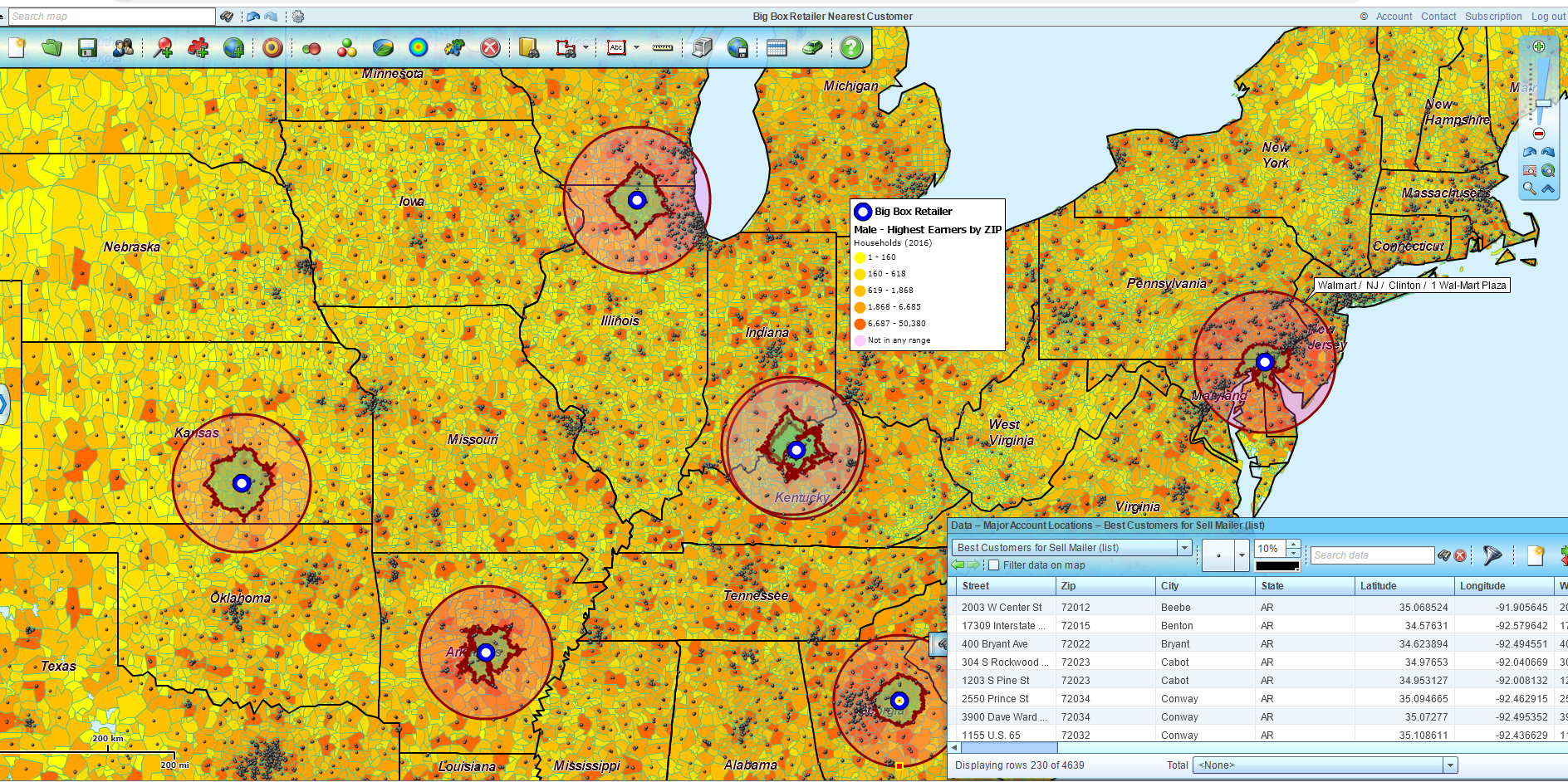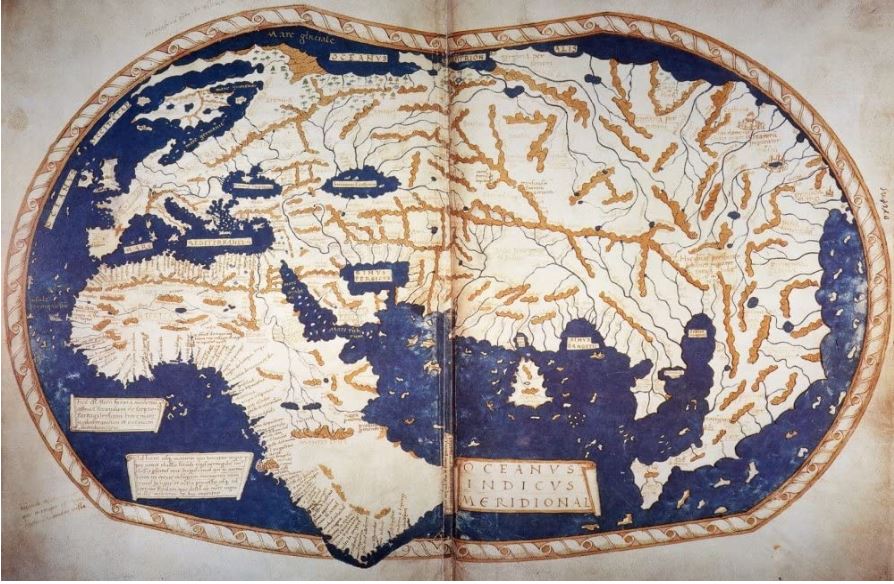How can a business mapping software application claim to provide market analysis? Fair question. I believe one of the primary reasons business mapping is helpful in analyzing markets is that markets are commonly associated with physical areas of the world, local or worldwide.

Developing Market Area Profiles Using MapBusinessOnline.
Ancient History of Market Analysis
Examples of markets identified with sections of the Earth abound. Picture, if you will, some of the early markets at the dawn of civilization. Along the Tigris and Euphrates River valleys, wheat and other crops had become attractive to the surrounding hunter-gatherer tribes. As more and more people traded for wheat or began cultivating produce themselves, markets sprang up.
Pretty soon humankind’s first cities and towns took root around these early agricultural harvest marketplaces. As the marketplace was expan,ded other products also started to appear in these early shopping plazas– clothing, early booze, and early Emma Eames recordings.
As cities and towns spread across the middle east and into Europe and Asia, markets went with them. Trade flourished along routes between major cities and, eventually, empires and nations. As the civilized world expanded, products were moved over thousands of miles to satiate demand in faraway places.
Later came the age of seaborne exploration. If my high school social studies classes serve me right, gold and spices were the significant drivers of exploration—hot imported products from the New World and the money to pay for their transport to the Old World. And at that time, as the age of exploration took hold, accurate maps became extremely valuable purveyors of information. Of course, ‘accurate’ back then was a relative term.

An ‘accurate’ map of the world circa 1489.
So, maps frtheeir very beginning were very focused on markets. Much like they are today. And when you load up maps with product locations, sources for gold and silver, and transportation routes, it’s not a stretch to call the study of those subjects – analysis.
Map-based Market Analysis Today
Examples of industries that use market analysis maps today include banking, franchising, insurance, law enforcement, real estate, retail, restaurants, sales & marketing, and a whole host of service businesses. All these industries were in their infancy in Sumaria, Mesopotamia, and Babylon. Ask any archaeologist. They really did have insurance back then.
Today, business maps provide even more accurate and easy-to-use cartographic representations of the world’s marketplaces. MapBusinessOnline is focused on North America – for now, anyway.
The current USA marketplace is quite complex. Fortunately, governments and businesses have worked together over the centuries to create jurisdictions that provide physical areas for organizing markets. ZIP code, county, and city boundaries serve as fantastic marketplace identifiers. These same jurisdictions provide laws and rules that enhance and police commerce so that chaos does not disrupt the flow of goods and services. Although, from time to time, chaos does creep in. Think early Pandemic 2020, September 11, 2001, and Filenes Basement in Boston in the 1970s.
MapBusinessOnline relies on boundary sets such as ZIP codes and City Limits for its geographic structure supporting map-based market analysis. These government and postal service-assigned geographies are matched geographically by the US Census Bureau, which uses these areas for demographic segmentation.
The practical result of this symbiotic digital partnership between government and commerce is that a business map user can identify areas where marketplaces exist, products are sold, and analyze these areas for their demographic attributes. Business subscribers to MapBusinessOnline can overlay their sales activity and customer locations on top of accurate digital maps through easy spreadsheet imports.
MapBusinessOnline market analysis is more than informative – it’s darn-right powerful. Through this analysis, market trends and patterns become apparent. These marketplace revelations include:
- Defining the demographic segments that support your products or services.
- Determining which geographic areas contain the resources that will support and encourage future growth.
- Identifying the ZIP codes or cities that spatially define your best-performing marketplaces.
- Helping to determine the best new marketplaces to test for future growth.
The power of business mapping market analysis is the ability to profile a ZIP code or city based on your product sales and uncover untried ZIP codes or cities in other parts of the country that match your best original profile.
A ZIP code or city profile will include business sales data and, in consumer-focused businesses, demographic data. But ZIP code profiles might also include competing businesses, critical resources supporting your industry, labor statistics, tax rates, and more. I think you get the picture.
So, while New York City markets are certainly more complicated than downtown Uruk, Sumer, 5000 years B.C., technology has kept up with the situation. Business mapping and map-based market analysis will carry your business forward toward future markets and continued growth for another 5,000 years. Don’t forget to renew.
_______________________________________________
Discover why over 25,000 business users log into www.MapBusinessOnline.com for their business mapping software and advanced sales territory mapping solution. The best replacement for Microsoft MapPoint happens to be the most affordable.
To access MapBusinessOnline, please register and download the Map App from the website – https://www.mapbusinessonline.com/App-Download.aspx.
After installing the Map App, the MapBusinessOnline launch button will be in the Windows Start Menu or Mac Application folder. Find the MapBusinessOnline folder in the Start Menu scrollbar. Click the folder’s dropdown arrow and choose the MapBusinessOnline option.
The Map App includes the Map Viewer app for free non-subscriber map sharing.
Please read customer reviews or review us at Capterra or g2crowd.
Contact: Geoffrey Ives at geoffives@spatialteq.com or Jason Henderson at jhenderson@spatialteq.com.
